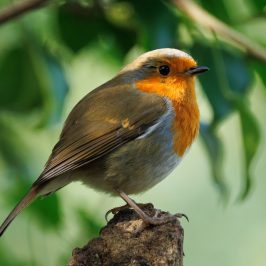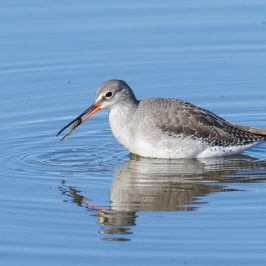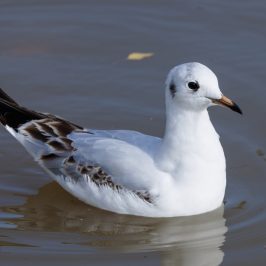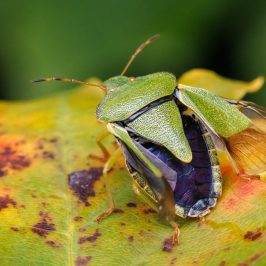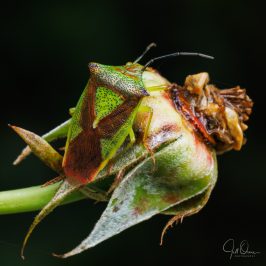I recorded three season firsts today, and I’m posting photos of two of them this evening. The main image, featured at least partly because he was the hardest subject of the day to capture on camera, is a male red mason bee, Osmia bicornis, feeding on the crab apple tree in the yard. The extra shows one of the two Epistrophe eligans hoverflies I found on the hedgerow in Tilly’s field this morning, feasting from the blackthorn blossom and oblivious to my attentions. (My third ‘first’ was a Bombus vestalis queen, who was also feeding on the hedgerow – high enough above my head to give me an excellent view of her diagnostic abdominal markings, but sadly too high for good descriptive photos.)
I’m always pleased to see Osmia bicornis, which I think is a lovely little bee, but I haven’t met a specimen yet that regards me with anything other than disfavour. They’re restless and skittish at the best of times, and because they’re small and fast it can be difficult to track them when they realise they’re being pursued and start taking evasive action. Females are 10-12mm long, with black hair on their faces and a pair of horns below the antennae, which they use for moulding the mud with which they line and seal their nest cells. Males are a little smaller, at 8-10mm in length, and have pale hair on their faces, longer antennae, and no horns.
After first spotting this male I tried very hard to creep up on him without ringing his alarm bells, but I failed, and we then found ourselves playing a game of Grandmother’s Footsteps that was no doubt stressful for him, and certainly irritating for me. After a couple of circuits of the tree I decided to apply a more intelligent strategy, and staked out a blossom cluster on the sunny side that I hadn’t yet seen him visit. I was then distracted by a zebra spider, which was eating a leafhopper on the nearby honeysuckle, and when I glanced back at the crab apple I was surprised to find the bee feeding almost at my elbow. Luckily the camera autofocus caught first time, and I was then able to back away and let my subject have the rest of his lunch in peace.
Osmia bicornis has been quite extensively studied, and there’s a good Wiki here, if you’d like to know more about these interesting little bees.



